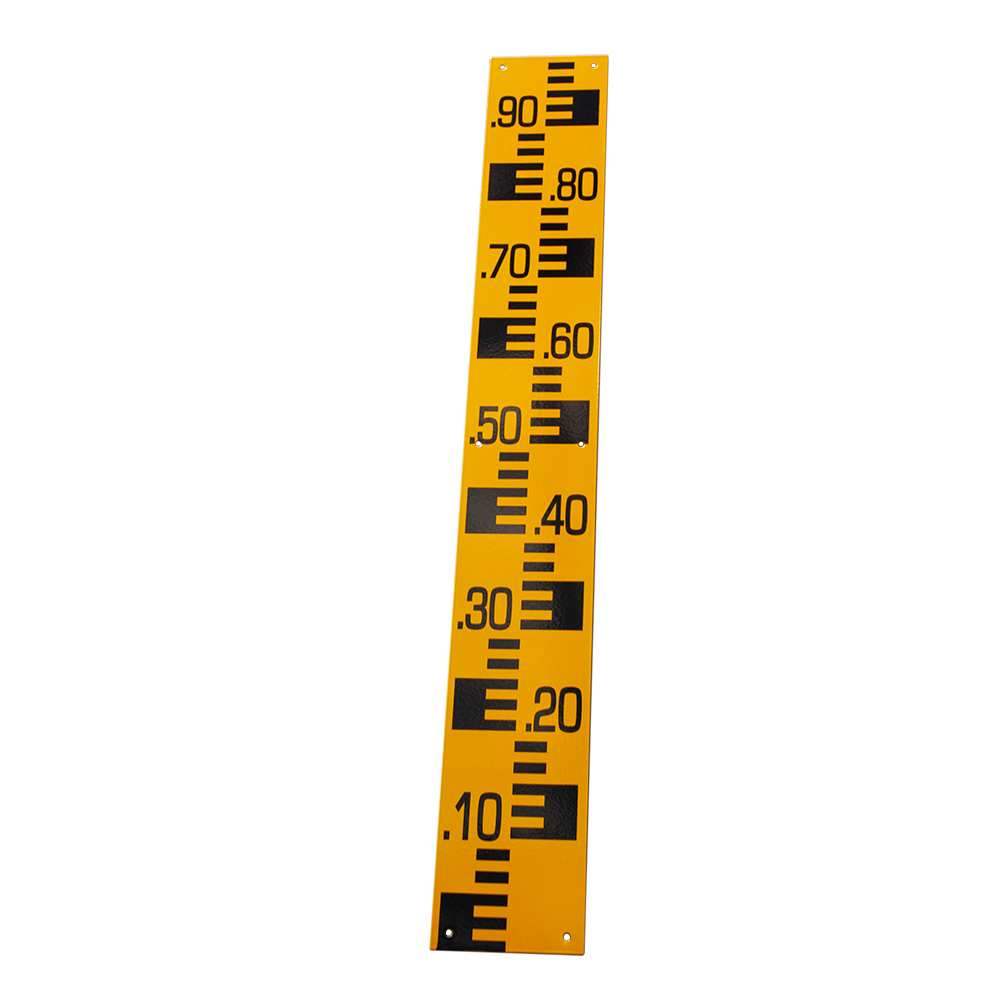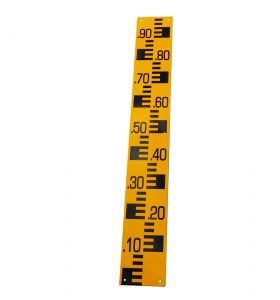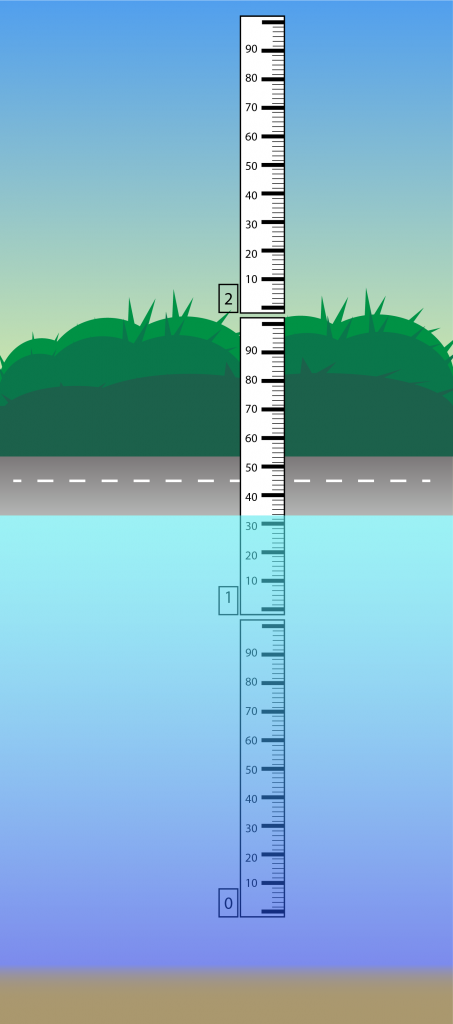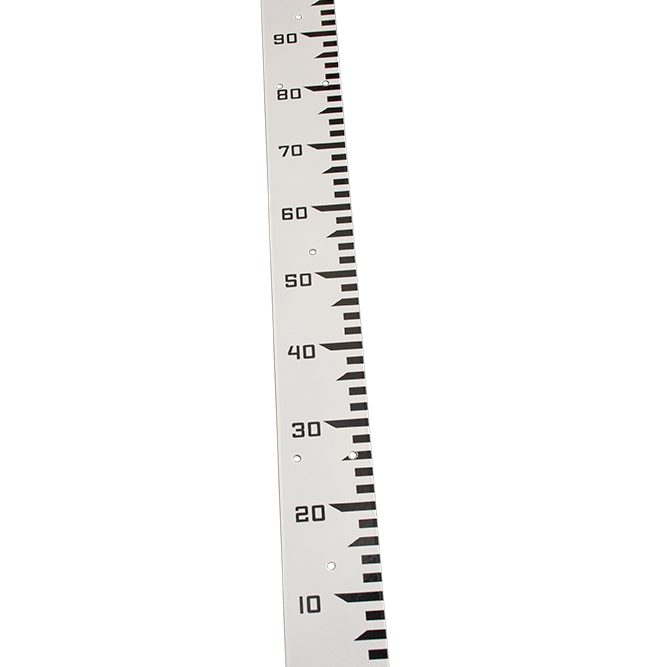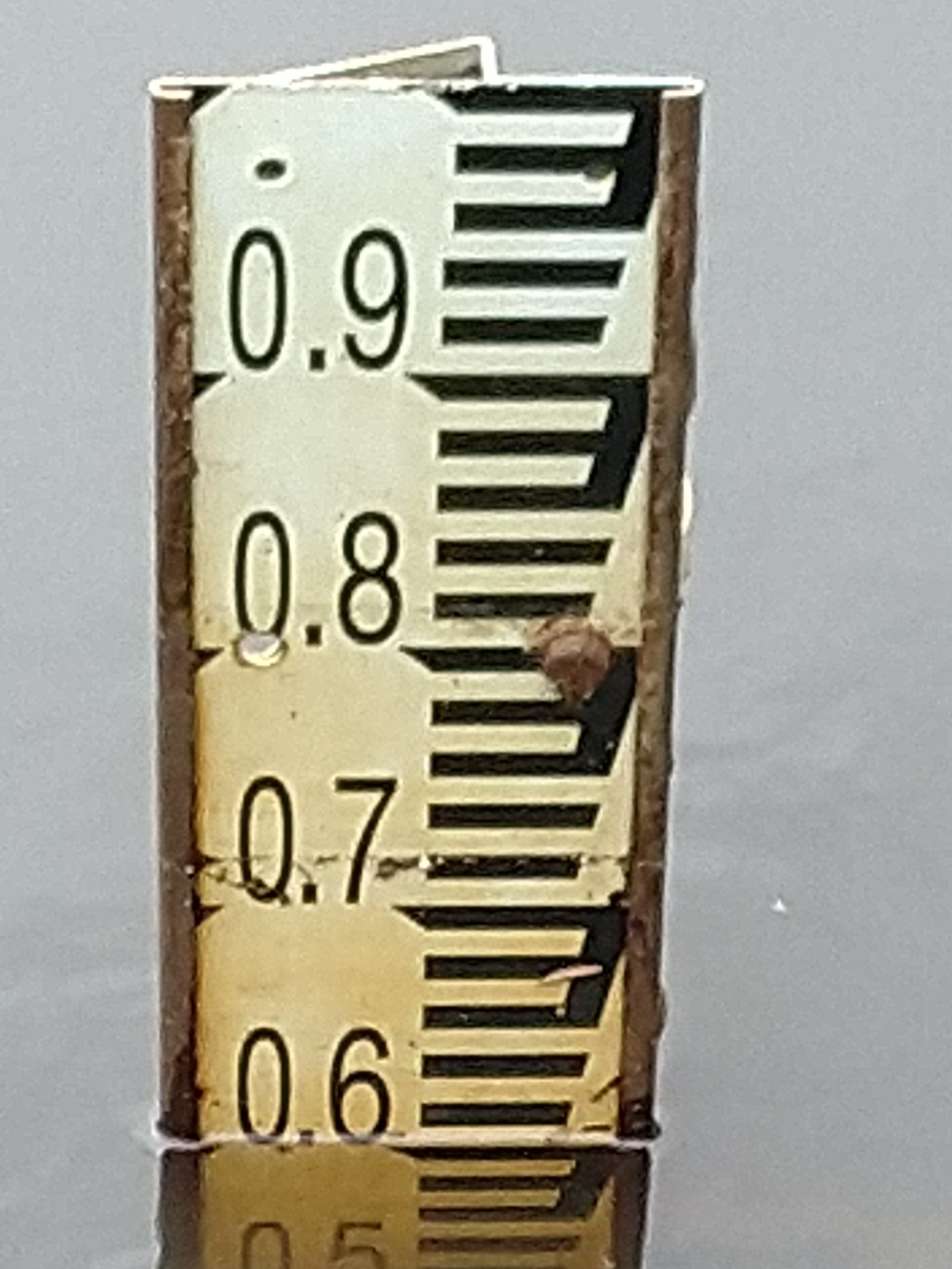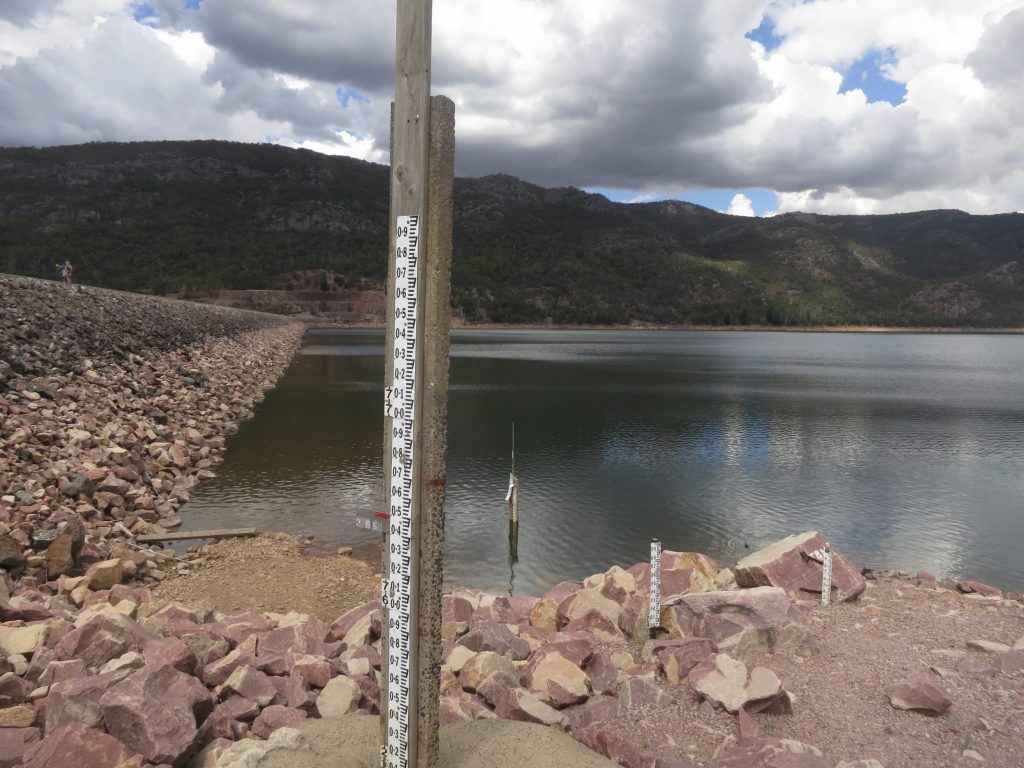Staff gauges (Staff Gages in the USA) look like oversized rulers, that are permanently installed in a body of water. They provide a quick visual reference of the water level. Their simplicity and effectiveness mean they are quite ubiquitous, in fact, after reading this article we bet you will spot more staff gauges on your river walks.
Calling a staff gauge an ‘an oversized ruler’ is a little disparaging, however, we are not far from the truth. Of course, there is a lot more to them than meets the eye.
Staff gauge appearance
Staff gauges come in various styles and types, each to suit a different application. Depending on the country and monitoring organisation, the designs will vary dramatically, some have bespoke designs to suit their preferences.
There are a few constants, however. For gauges situated in hard-to-access areas (binoculars required occasionally), visibility is paramount. In such cases, large simple fonts reduce reading errors. Large fonts will typically display increments of 2cm and with every 10cm marked and labeled accordingly. A Type M gauge is typical of this in Australia (see Fig. 1). Note that in the USA imperial measurements would be common as opposed to metric. In some applications, increment numbers are impractical. Instead, large lines indicate increments, a Type E gauges (see Fig. 2) is an example.
When a greater degree of accuracy is needed, a gauge with multiple numbered increments becomes necessary. Being able to closely inspect the gauge is critical for accuracy.
How do staff gauges work?
A staff gauge must cover the full water level range. The lowest and highest expected levels must both be measurable.
Due to the impracticality of manufacturing a 5 metre staff gauge, the full length must be separated into separate 1 metre lengths. The lengths are then ‘stacked’ top to bottom. At each metre interval, a number plate will indicate the total number of metres see Fig. 3. Using this the person taking the reading can count up/down from the number plate to obtain the water level. Without the indicator plates, it would be difficult to tell if the water level is at 0.8m or 2.8m.
Staff Gauge Construction.
Staff gauges all share a similar construction. They have a metal core covered in an enamel shell. Standard metals often have too many impurities in them preventing the enamel coating from adhering properly. As such, stainless steel or a special enameling metal make up the core.
Staff gauges do not have an easy life. Barnacles grow on submerged sections, hard debris knocks them during river flood events and easily accessible gauges become vandalised and defaced with harsh solvent paints. In addition, the sun’s UV radiation constantly attacks exposed sections.
To give protection against such attacks, a tough enamel similar to bathtubs and kitchen cooktop coatings forms the gauge’s outer shell. Consequently, gauges easily survive flood events and withstand frequent wire brushing to clean off barnacles and algae. Enamel is also resistant to most solvents and acids. Sometimes gauges are made using fibreglass with a protective coating over the top.
Staff gauge shapes and sizes.
The length of staff gauges is almost always 1000mm. However, widths could vary from 65mm to 110mm wide. Staff gauge widths depend on the application and/or type. Where larger fonts are needed for greater visibility it makes sense to use a larger width. However, sometimes the mounting structure for the gauges will dictate the width.
Find more information on our range of staff gauges by clicking here.

